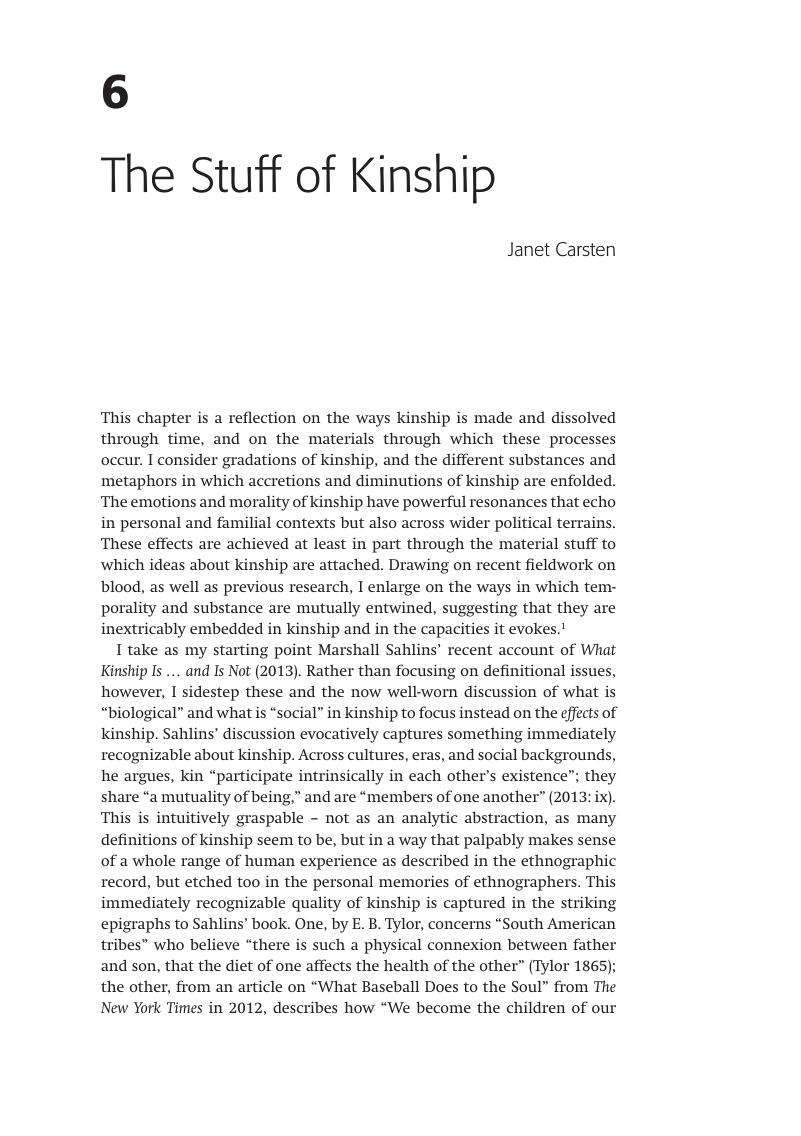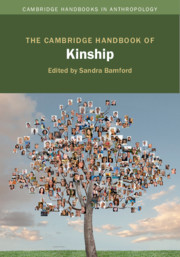Book contents
- The Cambridge Handbook of Kinship
- Cambridge Handbooks in Anthropology
- The Cambridge Handbook of Kinship
- Copyright page
- Contents
- Figures
- Tables
- Contributors
- 1 Introduction: Conceiving Kinship in the Twenty-First Century
- Part I Opening Frameworks
- 2 The Seeds of Kinship Theory
- 3 Descent in Retrospect and Prospect
- 4 The Alliance Theory of Kinship in South Indian Ethnography
- 5 The Anthropology of Biology: A Lesson from the New Kinship Studies
- 6 The Stuff of Kinship
- Part II The (Non)Biological Basis of Relatedness
- Part III Reproducing Society: Gender, Birth, and Power
- Part IV Transnational Connections
- Part V Technological Conceptions
- Part VI Kinship and the Nation-State
- Index
- References
6 - The Stuff of Kinship
from Part I - Opening Frameworks
Published online by Cambridge University Press: 22 April 2019
- The Cambridge Handbook of Kinship
- Cambridge Handbooks in Anthropology
- The Cambridge Handbook of Kinship
- Copyright page
- Contents
- Figures
- Tables
- Contributors
- 1 Introduction: Conceiving Kinship in the Twenty-First Century
- Part I Opening Frameworks
- 2 The Seeds of Kinship Theory
- 3 Descent in Retrospect and Prospect
- 4 The Alliance Theory of Kinship in South Indian Ethnography
- 5 The Anthropology of Biology: A Lesson from the New Kinship Studies
- 6 The Stuff of Kinship
- Part II The (Non)Biological Basis of Relatedness
- Part III Reproducing Society: Gender, Birth, and Power
- Part IV Transnational Connections
- Part V Technological Conceptions
- Part VI Kinship and the Nation-State
- Index
- References
Summary

- Type
- Chapter
- Information
- The Cambridge Handbook of Kinship , pp. 133 - 150Publisher: Cambridge University PressPrint publication year: 2019
References
- 9
- Cited by



